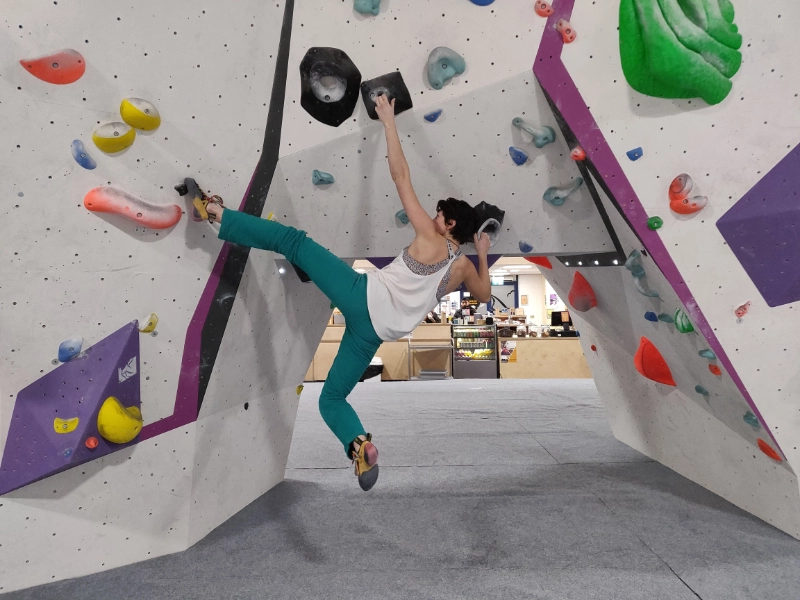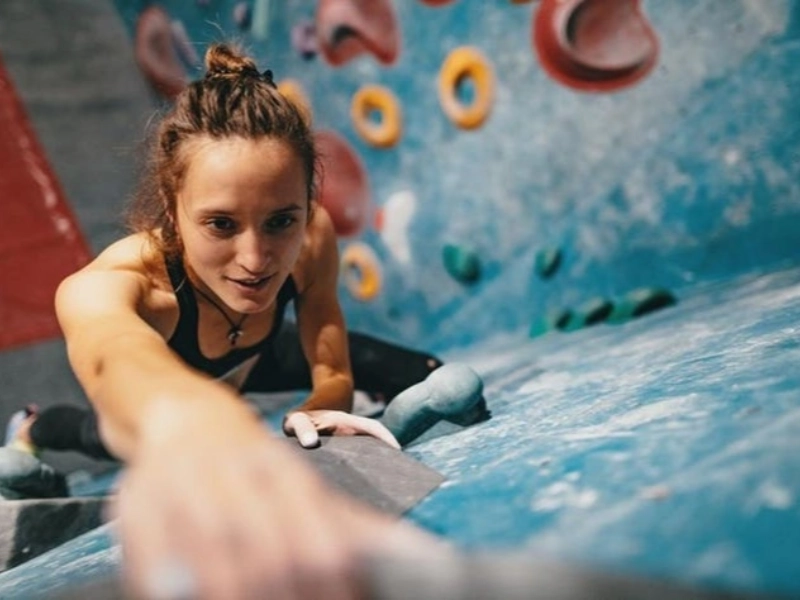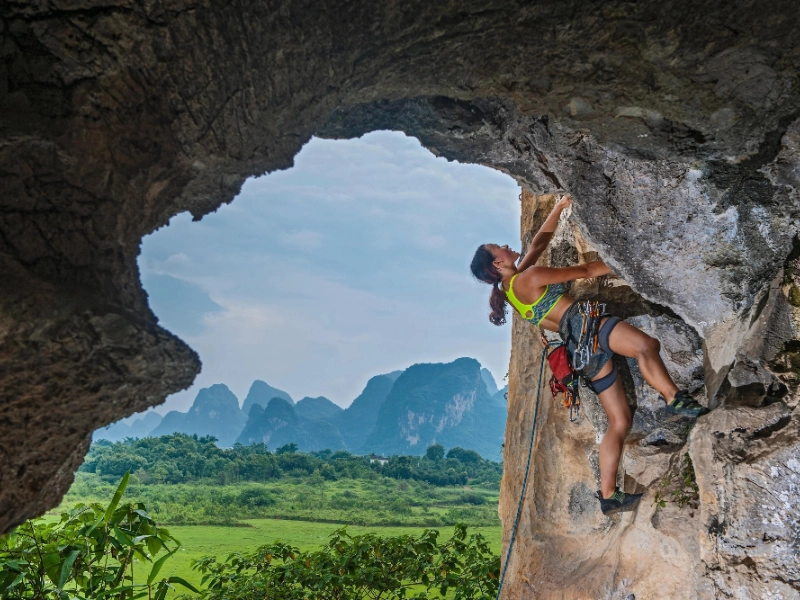It is true that climbers who are lighter find it simpler to support their body weight higher up the wall. However, gaining weight is not a prerequisite for getting further. Without the use of any equipment, callisthenic workouts (such as push-ups, pull-ups, sit-ups, running, and jumping jacks) and other strength training techniques can assist you in building the necessary muscles.

 It's a common misconception that climbing ability is solely determined by height, but that's not always the case. Regardless of height, climbers possessing extraordinary body control, core strength, and finger dexterity can accomplish amazing feats.
Taller climbers can reach farther with their arms than shorter ones, so yes, they can do more movements, but only on specific routes and techniques. For instance, climbing frequently involves dynos, which are dynamic manoeuvres that entail jumping on and off the wall. If performed improperly, these can be quite dangerous.
Long limbs can also make it more difficult to maintain your balance on steep terrain, which calls for a strong core. But the majority of competitive and professional rock climbers are rather tall. They frequently grow to be six feet or more. They often have a high muscle mass index and a healthy BMI. They can accomplish their aims even if they might have to put in more effort than shorter climbers.
It's a common misconception that climbing ability is solely determined by height, but that's not always the case. Regardless of height, climbers possessing extraordinary body control, core strength, and finger dexterity can accomplish amazing feats.
Taller climbers can reach farther with their arms than shorter ones, so yes, they can do more movements, but only on specific routes and techniques. For instance, climbing frequently involves dynos, which are dynamic manoeuvres that entail jumping on and off the wall. If performed improperly, these can be quite dangerous.
Long limbs can also make it more difficult to maintain your balance on steep terrain, which calls for a strong core. But the majority of competitive and professional rock climbers are rather tall. They frequently grow to be six feet or more. They often have a high muscle mass index and a healthy BMI. They can accomplish their aims even if they might have to put in more effort than shorter climbers.
 Many climbers fall victim to the myth that in order to get better in their sport, they must reduce weight. Although it can be beneficial, decreasing excess weight is not the ideal method for improving your strength-to-weight ratio. The best strategy is to strengthen your core and forearm flexor muscles, among other climbing-specific muscle groups. A common mistake made by climbers is to train muscle groups (like biceps curls) apart from grip strength.
Because these activities overstress tendons and ligaments, they can actually reduce your climbing performance. They can potentially cause harm because they shorten your time for rest and recuperation.
Rather, concentrate on locating an experienced coach who can assist you in creating a customised training plan for your climbing. Next, strike the ideal balance between the different forms of strength training and climbing that will keep your body strong and healthy. The right volume and intensity of your climbing training will help you maximise your performance without running the risk of injury. A certified coach can also offer you advice on this.
Many climbers fall victim to the myth that in order to get better in their sport, they must reduce weight. Although it can be beneficial, decreasing excess weight is not the ideal method for improving your strength-to-weight ratio. The best strategy is to strengthen your core and forearm flexor muscles, among other climbing-specific muscle groups. A common mistake made by climbers is to train muscle groups (like biceps curls) apart from grip strength.
Because these activities overstress tendons and ligaments, they can actually reduce your climbing performance. They can potentially cause harm because they shorten your time for rest and recuperation.
Rather, concentrate on locating an experienced coach who can assist you in creating a customised training plan for your climbing. Next, strike the ideal balance between the different forms of strength training and climbing that will keep your body strong and healthy. The right volume and intensity of your climbing training will help you maximise your performance without running the risk of injury. A certified coach can also offer you advice on this.
 The physical strength of your fingers and upper body as well as the mental toughness required to face fear and navigate routes are just two of the numerous variables that determine how good a rock climber is. The fact that no single factor—like height or weight—trumps the others demonstrates the true diversity of the sport and the variety of people it draws.
Climbing performance can be enhanced by both weight loss and muscle gain. The secret is to concentrate on raising your strength-to-weight ratio—a variable that you may manage by achieving optimal body composition.
A well-crafted training regimen should result in quantifiable gains in pulling and finger power while maintaining a low enough body weight to prevent overexertion. This will probably be the quickest path to better climbing for people who are currently at a somewhat healthy body weight. It is also the best strategy to increase the strength-to-weight ratio without sacrificing performance.
The physical strength of your fingers and upper body as well as the mental toughness required to face fear and navigate routes are just two of the numerous variables that determine how good a rock climber is. The fact that no single factor—like height or weight—trumps the others demonstrates the true diversity of the sport and the variety of people it draws.
Climbing performance can be enhanced by both weight loss and muscle gain. The secret is to concentrate on raising your strength-to-weight ratio—a variable that you may manage by achieving optimal body composition.
A well-crafted training regimen should result in quantifiable gains in pulling and finger power while maintaining a low enough body weight to prevent overexertion. This will probably be the quickest path to better climbing for people who are currently at a somewhat healthy body weight. It is also the best strategy to increase the strength-to-weight ratio without sacrificing performance.